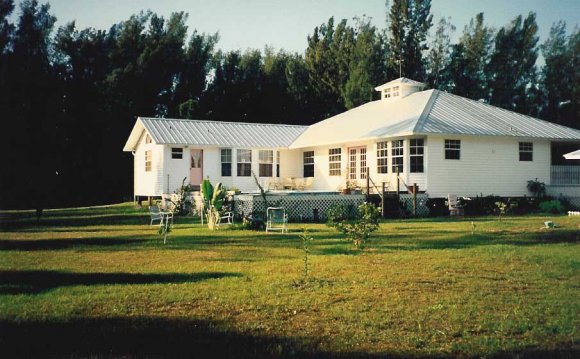
Almost 70% of the houses in South Carolina have crawl space foundations. We build more crawl space foundations than any other state in the country. Yet we continue to have problems with our crawl spaces. These problems include mold and decay, elevated radon levels, and termite and other pest concerns. We see condensation on ductwork, mold on joists, termite and wood boring beetle damage and cupped hardwood floors. Our current solution is to increase ventilation of the crawl space.
At an Affordable Comfort meeting that I recently attended, a speaker from Canada said that venting crawl spaces in the southeastern US was lunacy. I have to agree. In this paper, I will discuss some of the fallacies I see with our current practice of venting crawl space foundations, and provide guidelines for a higher performance crawl space.
Fallacy #1 - A research basis for current crawl space ventilation guidelines exists. Supposedly we vent crawl spaces to help control moisture. Looking back through historical documents we find several documents that discuss venting crawl spaces. In 1939, the Forest Products Lab published "Use and Abuse of Wood in House Construction" which contains "Screened vents totaling 3 percent of the house are best, with a thoroughly insulated floor… One small ventilator in each wall is hardly enough in the damp South."
In 1942, the Federal Housing Administration's "Property Standards and Minimum Construction Guidelines" contained the first requirement for ventilation of crawl spaces in regulatory literature. It pre-dates any known research on crawl space performance. These requirements state in part "Provide a sufficient number of foundation wall vents to assure a total ventilating area equivalent to 1/2 percent of the enclosed area plus 1/2 square foot for each linear feet of wall enclosing that area."
In 1948, the Housing and Home Finance Agency (HHFA) published "Crawl Spaces: their effect on dwellings." This document contains a discussion of some investigative work done by Britton on several housing complexes. Britton said "when ventilation to the extent of 1/1500 of the building area was cut into the crawl space walls, in conjunction with ventilation of approximately 1/500 of the building area in the loft space walls and the covering of the crawl space ground with 55# mineral surfaced roofing, all trouble was apparently eliminated." An interesting note with this discussion was that Britton was investigating attic moisture problems.
Britton included the note "Where crawl space floors are covered with 55# mineral surfaced roll roofing in an effective manner, the specified wall ventilation may well be reduced as much as 90% for controlled construction." The HHFA followed with another document that stated "Where a good cover is applied over the entire surface of the ground in the crawl space, very little ventilation [10% of formula] is needed."
The next thing we see is updated code requirements. The Minimum Property Standards of 1958 state "At least 4 foundation wall ventilators shall be provided, one located close to each corner of the space, having an aggregate net free ventilating area not less than 1/150 of the area of the basementless spaces, or ground surface treatment in the form of a vapor barrier material…plus at least 2 foundation wall ventilators having an aggregate net free ventilating area not less than 1/1500 of the area of the basementless space." The only difference I see between this 1958 code and the 2000 IRC code is that today we require a minimum of four vents at the 1/1500 ventilation level.
From my investigations and those of Bill Rose of the Building Research Council at the University of Illinois, research to support these recommendations and the code does not exist. What I can find in the literature appears to be limited to a field investigation with several moisture control steps happening at once. I do not see an evaluation of the effectiveness of each step. That is: When attic ventilation AND foundation ventilation AND a soil cover were added, the ATTIC moisture problem was fixed. These papers certainly contain good information, but I do not think it contains enough information to support our existing building codes and ventilation requirements.
In addition, nothing in the literature was found that scientifically supports partially covering the soil in a crawl space.
Fallacy #2 - We build houses the same today as when current crawl space ventilation guidelines were established. Many things have changed in the houses we build today versus what we built back in the 1930's-1950's. We often build on wetter sites (because many of the high-and-dry ones are gone.) We also build houses deeper into the ground. (I cannot count the times I have crawled DOWN into a crawl space.) We build smaller overhangs without gutters and downspouts, and sometimes do not slope the land away from the foundation.
The most significant change we have made in the last 50 years, in my opinion, is air conditioning. In many parts of the country, we make a standard practice of creating artificially cooler temperatures in our homes. Now we easily create temperatures that are near or even below the dew point temperature of the surrounding air. Condensation occurs on surfaces that never before experienced condensation. Air conditioning has upset the balance we used to experience, and the balance we were using when the ventilation codes were created.
Fallacy #3 - The 1/150 or 1/1500 ventilation area requirements mean something. I used an ASHRAE Standard 51-1985 air flow test device...









